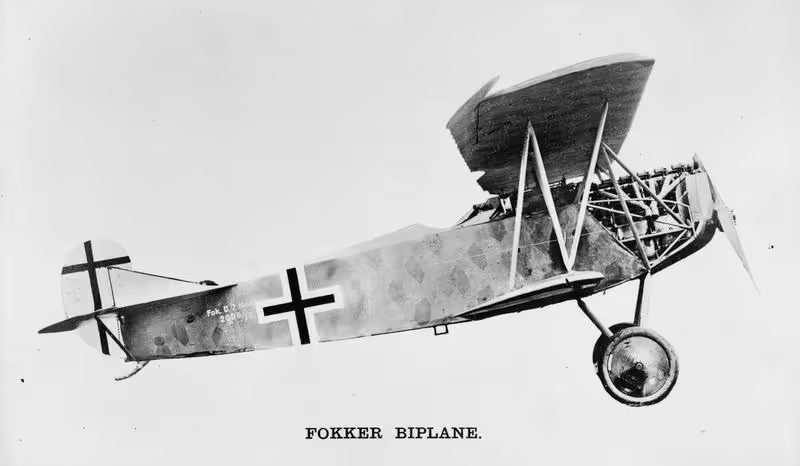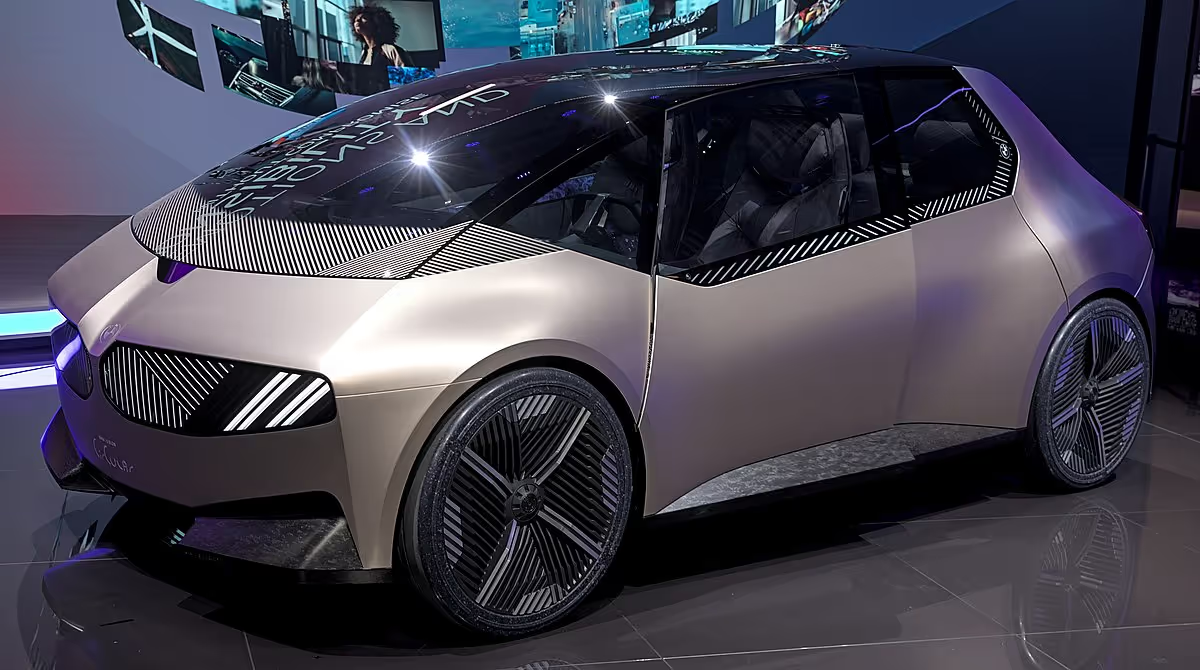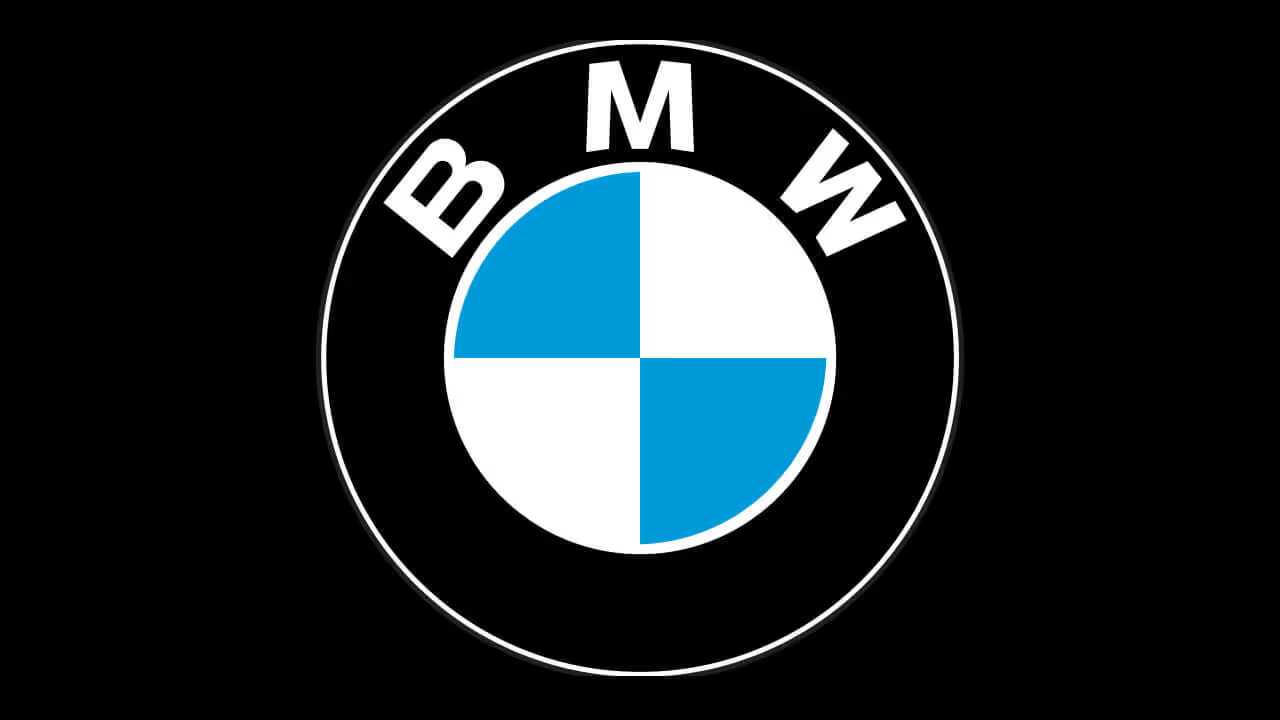Here’s what you’ll learn from BMW's strategy study:
- How changing industries is not a straightforward endeavor, but staying true to your identity’s core traits will help you achieve it.
- How clarity of vision guides the transformation process and helps you fit in an evolving industry.
The BMW Group – Bayerische Motoren Werke – is a German manufacturer of automobiles that markets its products through the brands BMW, Mini, and Rolls-Royce. It’s among the top 10 biggest car manufacturers in the world by revenue.
The Quandt family owns 50% of the company, specifically Stefan Quandt and Susanne Klatten, while the remaining 50% is publicly traded. Chairman of the Board of Management is Oliver Zipse since 2019.

BMW's market share and key statistics:
- Brand value of $27.6 billion
- Net worth of $52.9 billion as of December 22, 2022
- Annual revenue of $131.6 billion for 2021
- Total number of employees: 118,909
- 2,521,514 deliveries in the automotive segment in 2021
Humble beginnings: How did BMW start?
BMW was officially founded on March 7, 1916.
It was the result of a merger between Gustav Otto’s company, Otto Flugmaschinenfabrik and Bayerische Flugzeugwerke. However, the company was combined with Karl Friedrich Rapp’s company Rapp Motorenwerke in 1922 and was named Bayerische Motoren-Werke AG (BMW AG).
Today, BMW is known for its iconic cars and powerful engines. But its first business was aviation.
Aviation: BMW’s first business had people flying
The early twentieth century was a period of constant technological innovation in aviation.
As such, the demand was high and although there were only a handful of manufacturers, the competition was fierce. In the dawn of highly specialized spaces, the competition between companies is essentially a competition between individual inventors and their teams.
BMW had Franz Joseph Popp and Max Friz on its side, two excellent and experienced inventors. However, what set BMW apart from its competitors was the solid financial footing that enabled it to focus on supreme performance and reliability in the design of its aero engines. Instead of focusing on cost reductions and short-term convenience, the company focused on sophisticated engineering solutions and novel manufacturing techniques.
For example, the six-cylinder Type IIIa engine that Friz developed was performing exceptionally well in higher altitudes. In fact, it was so powerful that it gave the German Fokker D.VII fighter such an edge in World War I that it urged the air ministry to make space for its production in the BMW facilities by giving the production of another BMW engine to Opel, a competitor. In addition, once the war was over, Armistice’s fourth clause required Germany to hand over all D.VIIs to the Allies. It was that powerful.

But the Armistice also forbade the production of aero engines, forcing BMW to a complete restructuring.
It’s important to mention that building aircraft technology imbued BMW’s culture with values of extreme performance and technical sophistication that remain today.
BMW’s strategic pivot: how it moved to car manufacturing
The post-war era was tough for manufacturers in Europe since the end of military contracts meant that manufacturers were left with excess capacity, inflation was increasing, and the only available contracts were small and not very profitable.
Frank Popp, who ascended to General Director at BMW, devised a long-term strategy to develop future stability while keeping the company alive. His strategic plan was focused on three main pillars:
- Taking smaller manufacturing contracts to keep the cash flowing, like producing railway brakes.
- Modifying BMW’s star Type IIIa engine to a four-cylinder model, which was more appropriate for industrial and agricultural applications. That would allow the further development of the aero engine, despite production restrictions.
- Entering the motorcycle arena and using it as a stepping stone to move into the car market.
The strategy had a twofold intention.
The first was a bet on the removal of the aero engine production restrictions. Fritz was developing the next generation of the company’s star engine, so once the restrictions were lifted, BMW could resume its position as a pioneer in aircraft technology.
The second was a pivot with a simultaneous approach to retaining revenue streams. The modified engine proved to be profitable, and Fritz’s ingenuity gave birth to the famous “boxer” engine configuration – a motorcycle engine with innovations for more effective cooling and a higher power output – that brought BMW great success in motorcycle races.
The brilliance of the strategy was its clarity and its executable nature. It took advantage of the company’s current strengths in engineering knowledge, technological innovations, and credibility to move to adjacent manufacturing markets. A tactic that proved to be quite profitable.
In 1923, the bet paid off. The restrictions were lifted, commercial flying was on the rise, and demand was increasing. BMW faced some competition, but its engines proved superior, consistently breaking records of distance - and height - traveled and sustained the company until its entering the car market.
BMW’s challenges during World War II as a car manufacturer
In 1928, BMW entered the car market.
It was a long-standing belief that the company had the capabilities to design and manufacture a car, and its leadership believed that BMW’s long-term survival wasn’t aero engines, but cars.
Its approach was calculated and a few years in the making. The company chose to compete in a smaller, less crowded segment of the market: the small-car segment.
BMW acquired the struggling Automobilwerk Eisenach manufacturer and used its factory to produce the first-ever BMW car under the manufacturer’s brand name: the Dixi DA1. It was a variation of the British Austin Motor Company‘s model, the Austin 7. BMW’s engineers improved the model and launched the next generation the following year under the company’s brand name marking the first car designed and manufactured by BMW.
However, the company was far from a car manufacturer at the time.
Its main business was motorcycles. At the start of the 1930s, BMW was known for its powerful engines in the aero industry and its innovative motorcycle designs. The successes in the latter funded the company while honing its engineering capabilities. So, BMW continued developing all three of its business segments – aero engines, cars and motorcycles – with the third one keeping it alive.
But Germany’s austerity had driven all but five German car manufacturers out of business.
.avif)
In 1933, Adolf Hitler came to power, and things changed.
He revived the industry by providing financial security and certainty, reducing taxation, and building the necessary infrastructures to allow the industry to boom, i.e. highways like the Autobahn network. Evidently, Hitler’s intentions behind this investment were the development of engineering capabilities for military superiority and an efficient transportation system. They were in line with his long-term plans that resulted in the horrors of WWII, but nobody could predict that.
So, until WWII started, BMW took advantage of the new market conditions to improve its car engines, expand its target market and develop its first signature car: the sedan. The car achieved moderate success, capturing 6% of the car market share, beating its number 1 competitor, the Daimler-Benz. BMW managed to make a name as a fashionable car manufacturer.
Soon after that, Hitler’s plans created two challenges for BMW.
The first challenge was the increased demand for aero engines that took most of BMW’s manufacturing capabilities. With only one car-producing factory, the company was leaving money on the table with its decreased output. Popp’s strategic decision at the time unknowingly saved the company from a certain demise. Instead of opening a new factory, Popp decided to upmarket and aim for the high-end of the market spectrum where margins were better, and the demand couldn’t get out of hand. All three of BMW’s business units were booming until 1940.
The second challenge was a hostile takeover of the company by Berlin’s dictator. The war was just around the corner. There was no room for commercial manufacturing, only military. Whoever tried to oppose was driven out of the company, including the company’s co-founder Frank Popp. BMW was forcefully transformed into an arms manufacturer and a forced-labor employer.
Once the war ended, the scene was not looking good for BMW. It had multiple facilities bombed, was affected by impossible restrictions imposed by the Allies, and its car factory was left on the wrong side of the Wall.
How BMW survived post-WWII
Good connections between the US Forces and senior BMW managers saved the company from total obliteration and allowed it to remain in business making domestic pots, bicycles and agricultural machinery.
However, the company never completely shredded its previous identity. Old employees returned and the design for a new motorcycle was secretly being developed.
By 1952, BMW had resumed motorcycle and car production. However, none of its products achieved sufficient sales, and by the end of the decade, the company escaped from a near Mercedes-Benz acquisition with the investment of the Quandt brothers. Through a few well-timed and well-seized opportunities, BMW got a hold of great talent and found its breakthrough in the steering wheel of the BMW 1500.
.avif)
Since then, the company has had a steady course to the top accumulating successes in engineering innovation and trend-setting designs that helped the company expand its businesses internationally.
Key Takeaway #1: Accept incoming change and take your expertise with you
When the world changes, clinging to the old status quo is suicide. On the contrary, embracing change without shedding the identity of your company is the best way to adapt.
This is how you can do this:
- Identify what makes your company unique. Do a SWOT analysis and a culture inventory (values and accepted behaviors).
- Have clear answers to the following questions: Which strengths and cultural traits can you transfer? What weaknesses and cultural traits must you shed?
- Retain high levels of agility with an iterative approach to execution. Treat your approach as a learning process.
BMW’s current corporate strategy: “We see the future as electric, digital and circular.”
BMW is over 100 years old. It wouldn’t be here today, if it hadn’t demonstrated a powerful strategic instinct and a strong, adaptive corporate strategy.
And today, it needs these two more than anything. The landscape of the car industry is going through a transitional phase. The survival of legacy carmakers, like BMW, requires massive transformation and a focused strategy tailored to today’s complex and differentiated external conditions. BMW’s leadership recognizes this fact.
Here are the three conditions that outline BMW’s complex and demanding competitive landscape:
- Increased global competition, including emerging new players in China with potentially global reach.
- Industry-shaping megatrends that take the focus away from traditional car manufacturing traits. Electromobility, connectivity and digitalization have become the new competitive arenas.
- Increased prioritization of sustainability and environmental impact from both buyers and regulatory forces. Followed closely by societal impact.
“BMW Group strategy” is a transformational bet on the future of the industry.
We see the future as electric, digital and circular.
BMW separates its operations into three segments:
- The Automotive segment
- The Motorcycles segment
- The Financial Services segment
And manufactures vehicles under three brands:
- BMW
- MINI
- Rolls-Royce
With a quick glance, it’s obvious the company targets the high-end of the market with its offerings ranging from premium to ultra-luxury products. Rolls-Royce is solely ultra-luxury, MINI is premium and BMW products range from premium to ultra-luxury. The company has a unified vision, but each brand will adapt to the company’s vision at a different cadence.
Let’s see how BMW’s corporate strategy tackles the company’s transformation.
Electric Mobility: the competitive landscape and BMW’s strategy
Electric Vehicles (EVs) have been a massively trending category in the last few years, driven by two powerful forces: demand and regulatory requirements. And BMW is committed to becoming one of its major players.
Its goals are to:
- Achieve >30% share of electrified cars in total deliveries by 2025
- Achieve >50% share of electrified cars in total deliveries by 2030
.avif)
These are ambitious goals and reveal a significant shift in its business focus that requires a massive internal transformation. Success isn’t guaranteed because the space is already crowded and the competition fierce:
- TESLA, the category queen of EVs, defends its top place remarkably well by maintaining its edge in battery engineering and chip design with its in-house expertise.
- Honda partnered with Sony to enter the EV category and Xiaomi announced its plans to build an electric car plant.
- General Motors and Nissan have set their own ambitious goals and brought strong propositions to the market. Ford saw unexpected demand for its F150 all-electric lightning pickup truck, and Toyota promised to offer 30 EV models by 2030.
- Mercedes-Benz made an aggressive move to luxury EVs with its Mercedes-EQ range.
- Alternative, eco-friendly and healthy alternatives are drawing more and more demand.
- China’s investment in infrastructure lowers the barrier of entry for new players and Chinese brands increase their competitiveness.
Not all of these players are direct threats to BMW, but the combined presence shapes the market and the competitive landscape in ways that cannot be ignored. If BMW is to survive and achieve its ambitious goals, it needs to address all of these points with a cohesive and focused strategy.
And so it does.
The company’s strategy in the Electric Vehicles category is aggressive, structured, and developed early. BMW’s approach to its electromobility transformation has three distinct phases:
In the initial phase, the BMW Group launched the fully electric BMW i3 in 2013, introducing electrification into standard production. The next year came out the BMW i8 with innovative technology and a futuristic design.
In the second and current phase, the MINI Cooper SE* and BMW iX3* lead the EV offensive. The company aims to have at least one fully electric model in virtually all key model series by 2023. The transformation is supported by developing its in-house competencies and restructuring all of its factories, especially in Germany, to develop the capability of manufacturing EVs. It also incorporates plans for developing a charging ecosystem.
In the third phase, BMW will launch its fully electric product line-up, the Neue Klasse. This new line of EVs will be characterized by a complete technology redesign, including redefined tech stack for autonomous driving, a high-performance electric drivetrain generation, and a New Cluster Architecture (NCAR) geared exclusively towards battery electric vehicles. The Neue Klasse line will focus on the concept of circularity (more on this later). Rolls-Royce and BMW’s motorcycle segment will also evolve in the direction of electromobility.
The company’s transition to electric mobility isn’t developed in silos. It’s tied to its digitalization and sustainability initiatives making it cohesive and interdependent.
Tackling digitalization: BMW’s initiatives and transformation
According to BMW’s view, the future of automobiles is highly digitized with increased connectivity.

The company is moving decisively in that direction by focusing its digital transformation strategy on two pillars:
- Initiatives that improve its operations.
- Initiatives for further digitization of its products.
In its operations, for example, the company implements a predictive maintenance strategy to prevent unnecessary production downtimes. It includes the use of sensors, cloud-based data analysis and Artificial Intelligence (AI) to assess the condition of its equipment before they present any flaws. It has also developed a complete online sales process and digital tools to aid customer experience inside the stores.
In its products, the company is developing appropriate software for all of the engineering aspects of its vehicles and for additional services for its customers. It offers, for example, remote software upgrades and “functions of demand.” Since 2020, the company has been offering the My BMW and MINI apps. BMW also aims to develop technologies for autonomous driving, i.e. technologies for automated driving beyond level 3.
The future of driving is autonomous, and it causes premium and luxury brands, like BMW, to take their attention away from designing the perfect driving experience and directing towards designing a cabin for the perfect cruising experience.
Car mobility turns into a pleasant and sustainable cruise.
Circularity: BMW’s sustainability strategy
The introduction of stringent legislation and regulations regarding environmental impact and responsible governance forces corporations to incorporate sustainability and responsibility into their strategic planning.
The more prudent companies have developed capabilities to address matters or, at the very least, develop the capacity to adapt to immediate additional regulatory changes rapidly.
So, BMW has set up impressive sustainable goals and mobilizes significant resources to accomplish them. Here are the company’s most important sustainability initiatives:
- Systematic integration of sustainability issues in decision-making. The Board of Management evaluates every topic submitted from the point of view of sustainability.
- Sustainability is built into individual market strategies. A holistic program is developed with centralized measures but combined with local activities in the markets. Best practices are shared within an established international sustainability network.
- Decarbonize the BMW Group’s vehicle fleet by an average of 40% over the entire life cycle (Scopes 1-3) by 2030 compared to 2019.
- Achieve net zero emissions across the entire value chain by 2050.
To achieve these goals, the Group integrates its electric mobility transition with its sustainability strategy. In other words, it changes its entire operational capabilities from product design to product development to product recycling in order to meet its sustainability targets.
But besides demand and regulatory requirements, there is a third force that shapes BMW’s transformation:
The limited availability of high-quality secondary raw materials.
A challenge that heavily impacted the industry in 2021 and is still present. BMW’s answer to that challenge is the concept of circularity.
The circular economy concept requires a holistic strategic approach and is based on four principles: Re:think, Re:duce, Re:use and Re:cycle. Its main objective is to create closed material loops that will give the company an alternative source of secondary material. Some highlights of the circularity concept are:
- The preference for secondary materials by reducing the use of primary raw materials in the automotive value chain. For example, closing material loops in the production chain.
- The implementation of the Secondary First approach which stipulates specifications for products, materials, and suppliers.
- Investments in resource-friendly technologies through funding of startups like Lilac Solutions, Boston Metal, and H2 Green Steel that offer materials from total green or eco-friendly production processes.
- Effective resource management, including the reduction of water used in production processes, the reduction of waste generated in its facilities, and the reduction of its emissions of volatile organic compounds (VOC3).
The Group also implements various initiatives to increase its energy efficiency and the amount of energy drawn from renewable sources. However, challenges always occur, and in 2021, the scarcity of semiconductors increased the energy consumption at some of its plants, increasing the YoY absolute consumption of the company.
But the company expects to improve its progress in the following years.
As a testament to its circularity approach, BMW has announced the design of a concept car called BMW i Vision Circular that will be made entirely out of recycled material and will be 100% recyclable.

The last part of BMW’s transformation concerns employees and society.
BMW’s employee development, attractiveness, and corporate responsibility
Attracting, retaining and developing talent is crucial for the success of BMW’s transformation.
To become an attractive employer, the company offers the following:
- Above average remuneration packages.
- A variable component dependent on the BMW Group’s overall performance.
- Additional benefits such as Company pension schemes and an attractive range of mobility benefits.
- A diverse range of options for working conditions like flexible working hours, remote working, sabbaticals and additional holidays (with a corresponding reduction in salary)
Its favorable working conditions have earned the company a number of awards and rankings, claiming the top spot against its fellow car manufacturers in multiple prestigious surveys.
To retain the great talent it attracts, the company:
- Conducts an internal employee survey every two years to assess the organization’s performance from within. The last one was in 2021 and demonstrated significant progress in all areas surveyed, and, most importantly, it demonstrated employees' support for integrating sustainability with strategy.
- Encourages employees to submit ideas on matters out of their normal remit and rewards those that generate a positive financial effect for the company with a bonus. In 2021, the company paid € 30.4 million in bonuses.
- Trains its employees. In 2021, BMW launched the largest training initiative in its history that increases the expertise of its workforce in electrics and electronics, data analysis, innovative production technologies, and new working methods.
To further support its transformation needs, the company has also developed internal processes that promote the desired personalities and skills to management positions.
BMW views diversity as a strength and makes considerable effort to embed it into its culture.
- It implements group-wide initiatives to raise awareness throughout the organization, like its annual Diversity Week and the internal communications campaign called Driven by Diversity.
- It encourages employees to engage and propose their own initiatives while it supports local internal networks and the BMW Group PRIDE group promoting the interests of the LGBT+ community.
- It takes a holistic approach by developing initiatives on five key diversity dimensions: cultural background, age and experience, sexual orientation and identity, physical and mental ability, and gender.
- It has set targets to increase the percentage of women in management positions and in the total workforce of the BMW Group.
The company has a set of KPIs to measure its progress on these fronts and is evaluated externally on the effectiveness of its initiatives.
When it comes to its corporate responsibility, BMW aspires to address concrete needs and achieve a long-term impact by means of its corporate citizenship activities. These activities leverage the company’s expertise and include crisis assistance – e.g. funded rescue services during the 2021 flood disaster in Germany – and developing local educational programs for younger people.
Key Takeaway #2: Bet on a clear and educated vision of the future
There are no strategies that are future-proof. At least, not good ones. When your industry evolves, make sure you’re prepared for the new way of things:
- Increase your sensitivity to market changes and industry trends. Have processes to gather the data, process it and evaluate it.
- Form a hypothesis for the future state of your industry and write it down as clearly as possible.
- What changes in a fundamental way? For example, the transition from a driving to a cruising experience requires prioritizing different principles.
- Decide who you want to be in that future and what capabilities you need to build today to achieve that.
Why is BMW so successful?
The success of BMW is due to its innovative engineering and design, as well as its demonstrated ability to make sound strategic decisions that help it adapt quickly to market changes.
The company has a long history of innovation that has helped it stand out in the automotive industry, and it is consistently focused on making sure its customers are satisfied with the cars they purchase. Over the years, BMW has evolved into a relationship brand building a loyal – and, dare we say, sometimes hardcore – customer base.
What is BMW’s mission statement?
BMW’s mission statement is “to become the world's leading provider of premium products and premium services for individual mobility.”
This vision encompasses the company’s goal of providing the best experience possible in the automotive industry, from the design and engineering of its products to its customer service.
Growth by numbers



